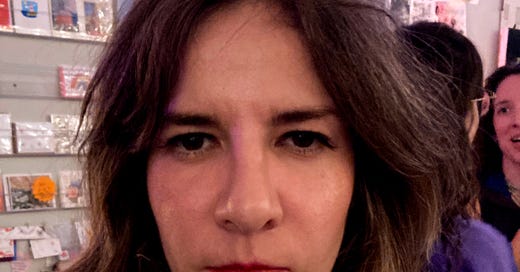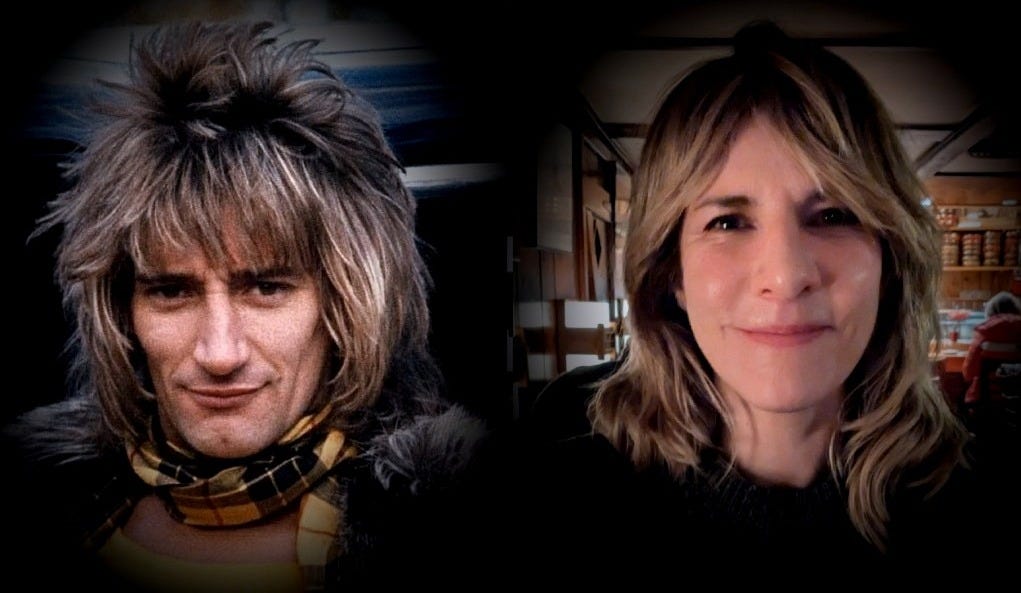It was an impulse that emerged with the force of something ancient and irrational. I’d been a long brunette for long enough. I needed its opposite–short and blonde.
I scheduled the appointment three weeks out and spent the interim not obsessing, but casually evangelizing the decision to anyone who would listen. I announced it like a manifesto: When the urge to change your hair arrives, you must obey. Otherwise, you risk eternal stasis. A good rule, I thought. Probably one of my better ones.
I was laser-focused on achieving a “grown-out shag.” I believed it would be the kind of haircut that had a considered infrastructure I could blissfully ignore. I’d heard the horror stories: friends weeping over accidental Carol-Brady mushroom mullets, mourning the early stages of their shags like they’d lost their front teeth.
I wasn’t about to let that happen to me. No, I would outsmart the system.
Armed with pdf print-outs of effortless, airy, cool layered cuts and sunshine blondes with moody dark roots, I entertained the idea of making a second, equally detailed anti-inspiration board—images of hairstyles I absolutely did not want. Ultimately, I abandoned the idea. Clarity, I decided, was the key.
Moments before the cutting began, I voiced my nervous plea: I just don’t want the top layers to be too short or...mushroom-y. My stylist reassured me with the confidence of someone who does this all day. I felt understood. I relaxed.
Five hours later, I faced the mirror. “Well,” I said, summoning every ounce of diplomatic grace, “I wanted something dramatic, and you gave it to me.”
Inside, I was spiraling. It was not the carefree, grown-out shag I had so carefully envisioned, but the spiky wig for a Rod Stewart1 halloween costume–something detachable that, tragically, I could not detach.
For the first few days, I oscillated between denial and grim acceptance, like someone acclimating to a new reality. I wore hats. I mastered the art of the high ponytail, twisting and pinning to tame the 80s glam to a more suitable size, sometimes muttering What have I done?
It wasn’t my stylist’s fault. It wasn’t even entirely mine. It was the eternal hazard of transformation: the leap from what was to what might be, landing somewhere unintended.
But just like other bigger choices I’ve agonized over–the career I didn’t pursue, the cross-country move I didn’t make–these are mutable. Even the decisions made on the fated day of my brain injury, though undeniably permanent, aren’t fixed in meaning.
The thing about regret: it has a way of distorting time, magnifying the moment of decision until it feels like a fixed monument to your own fallibility.
AND YET! Regret also only seems to exist where choice does, therefore, is it not a byproduct of freedom?
Nietzsche’s Amor Fati: The love of one’s fate, including the mistakes and missteps, as essential to the journey.
Rumi: “Try not to resist the changes that come your way. Instead, let life live through you.”
If regret is evidence of choice, could it not also be evidence of liberation? Yes, I chose this haircut. And yes, I hated it. But that choice, even if it felt disastrous in the moment, wasn’t a death sentence. It was a messy step forward in the grand creative experiment.
Is it just me or is part of the thrill of impulsive decisions the fact that they force you to embrace the creative chaos of making-it-work afterward? Just me?
The haircut I bemoaned turned out to be one more experiment—messy, sure, but necessary.
Every choice we make, no matter which way it falls, or mushrooms(!), is a layer, a chapter, a step, a draft.
So here’s my revised rule: When you feel the impulse, obey it. Because the only truly bad choice is refusing to choose at all.
To your choices! May you make many!
Abigail
To be clear: From Faces to his crooning-the-classics, I couldn’t love Rod Stewart more–just not interested in adopting his haircut for myself.









We are so lucky to have access to your mind and wisdom 🙏